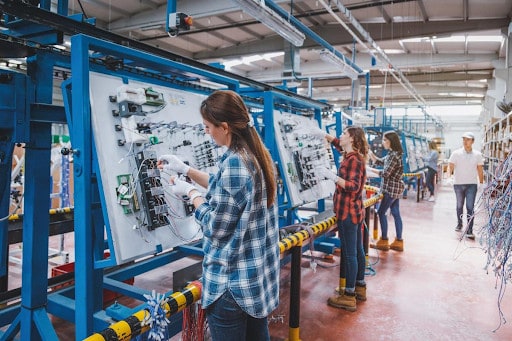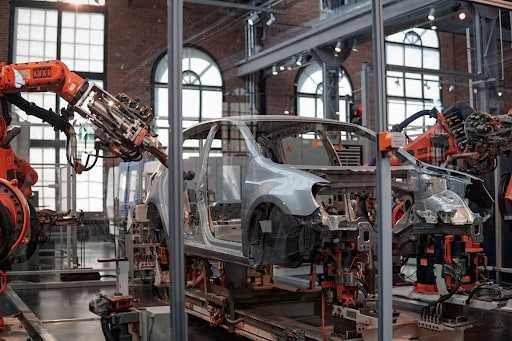In what is known as the on-demand economy, companies across sectors are modifying their business models to satisfy unique customer needs and rapid delivery times. This requires production models that are adjustable to business needs and supply customers with what they want – and when they want it. To respond to this new economic model, the manufacturing sector is transitioning to on-demand manufacturing projects that are transforming production as we know it.
Although a relatively new concept, on-demand manufacturing has introduced dramatic changes in the way buyers and engineers interact with suppliers – especially when it comes to custom products. The advancements in cloud-based technologies and platforms are changing the manufacturing landscape and offer numerous advantages for the production process, ones previously unattainable in traditional manufacturing.
So how does on-demand manufacturing differ from traditional manufacturing, and how can companies determine if it’s a suitable production model for their needs? In this article, we’ll look at how on-demand manufacturing works, as well as its potential benefits and limitations.
Traditional Vs. On-Demand Manufacturing
In traditional manufacturing, large quantities of a few selected products are produced at the lowest cost possible. To support this volume, companies need a large physical space where they can manufacture and store their products until they are ready to be shipped. With on-demand manufacturing, on the other hand, goods are produced only when needed and only in specific quantities.
Companies use the same manufacturing processes for both methods – employing anything from injection molding to CNC milling services – but in different capacities. Transitioning to an on-demand model for manufacturing projects gives companies more room for flexibility and eliminates the need for spending on housing inventory. That translates to a greater capacity for more specialized products that directly address the needs of their customers.
By utilizing cloud technology and a self-service model, companies can also manage their supply chain more easily and get quotes in real-time. That means they can order a precise quantity that satisfies their production requirement and adopt a just-in-time strategy across the supply chain.
Benefits Of On-Demand Manufacturing
By centralizing and automating interactions between buyers and suppliers, on-demand manufacturing removes inefficiencies and limitations at each step of the production process. That results in a much more streamlined procedure and, in turn, several benefits.
Efficiency
The lead time for traditional manufacturing can take up to ten months, but on-demand manufacturing shortens that time window in several ways. There is a quick turnaround time on quotes, available resources are managed more efficiently, communication is streamlined, and only necessary quantities are produced in rounds.
Cost Savings
With an on-demand platform, buyers can remove any expenses related to setting up a supply chain for new products, thus reducing internal costs and headcount. Additionally, with quick turnaround times for lower order quantities, they can minimize their inventory and free up capital for other purposes.
Early Market Testing
On-demand manufacturing also reduces prototyping costs, which allows companies to create and test products in small production runs before investing in their final design. Moreover, since there is no minimum order requirement, businesses can create prototypes in small amounts to raise interest in the market before deciding to continue with the concept.
Limitations Of On-Demand Manufacturing
Although there are several benefits that on-demand manufacturing offers when compared to the traditional manufacturing process, there are also some limitations to consider.
Production Volume
Given its fast turn-around times, flexibility, and the absence of a minimum order requirement, on-demand manufacturing is best suited for the introduction of new products and prototyping. However, if you need sustained production of a product in higher volumes, it’s best to look for a traditional contract manufacturer that can support a high-volume production supply chain.
Uniformity Of Quality Standards
The degree to which an on-demand platform sets and implements quality practices can vary from one supplier to the next. Some platforms may take steps to emphasize their quality and guarantee a uniform approach, but others may take a more hands-off approach.
Service Availability
Although there’s a clear benefit of flexibility in customization, the range of services offered by an on-demand platform can vary. That’s why it’s important to choose a platform that offers your needed capabilities. Additionally, businesses depend on suppliers to deliver orders quickly, so it’s important that suppliers can scale up production on demand.
Final Words
Companies worldwide – from small to large – can now use on-demand manufacturing to better serve their customers’ evolving needs and improve their production process in several ways. These include increasing efficiency, reducing costs, and doing early market testing.
However, at the same time, they should consider possible limitations of on-demand manufacturing like production volume, uniformity of quality standards, and service availability. Therefore, choosing the right production model depends on each business’s needs and should be approached with a corresponding strategy.





